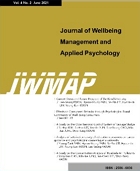- Log In/Sign Up
- E-ISSN2586-6036
- KCI
 E-ISSN : 2586-6036
E-ISSN : 2586-6036
Abstract
Over the last few decades, the atmospheric carbon dioxide emission has been amplified to a great extent in Turkey. This amplification may cause global warming, climate change and environmental degradation in Turkey. Consequently, ecological condition and human life may suffer in the near future from these indicated threats. Therefore, an attempt was made to test the relationship among a number of expected factors and carbon dioxide emissions in the case of Turkey. The study covers the time series data over the period of 1970-2017. We employed the modern econometric techniques such as Johansen co-integration, ARDL bound testing approach and the block exogeneity. The results of the Johansen co-integration test show that there is a significant long-run relationship between carbon dioxide emissions and expected factors. The long-run elasticities of the ARDL model show that a 1% increase in the GDP per capita, electric consumption, fiscal development and trade openness will increase carbon dioxide emissions by 0.14, 0.52, 0.09 and 0.20% respectively. Further, our findings reveal that the environmental Kuznets curve (EKC) hypothesis and inverted U-shaped relationship between carbon dioxide emission and economic growth prevails. Therefore, the EKC hypothesis is valid and prevailing in the Turkish economy. The diagnostic test results show that the parameters of the ARDL model are credible, sTable and reliable in the current form. Finally, Block exogeneity analysis displays that all the expected factors are contributing significantly to carbon dioxide emissions in the Turkish economy.
- keywords
- Environmental Degradation, CO2, ARDL
- Downloaded
- Viewed
- 0KCI Citations
- 0WOS Citations













